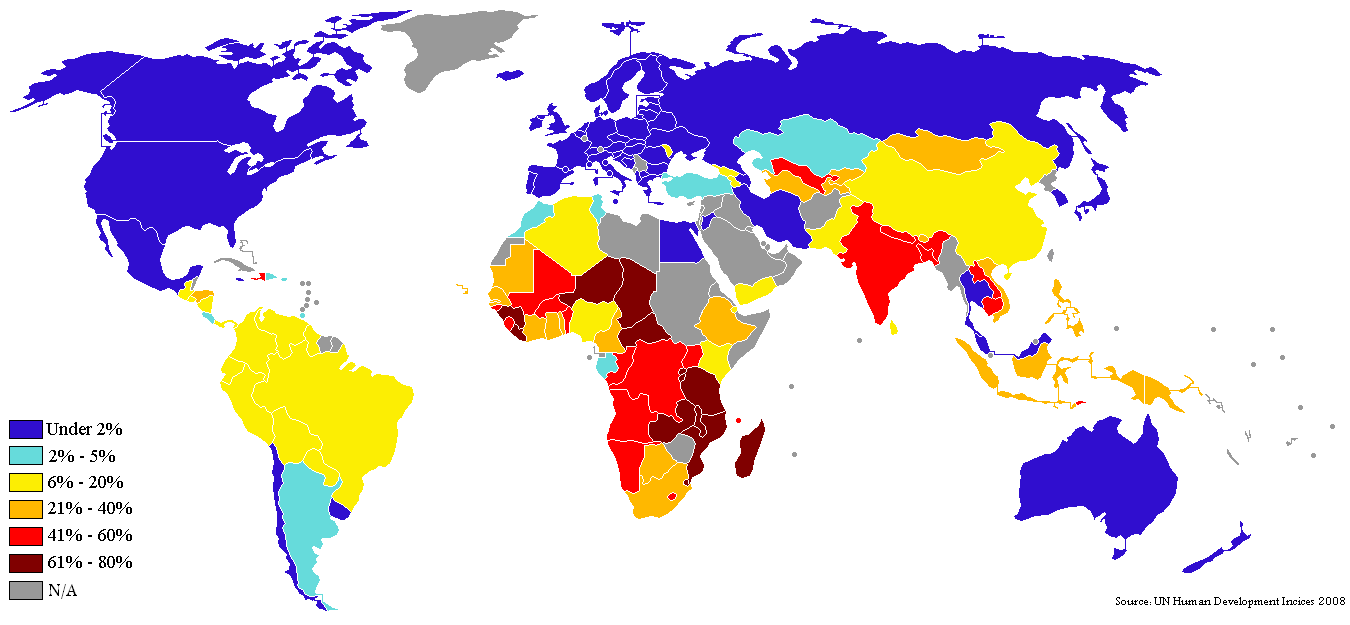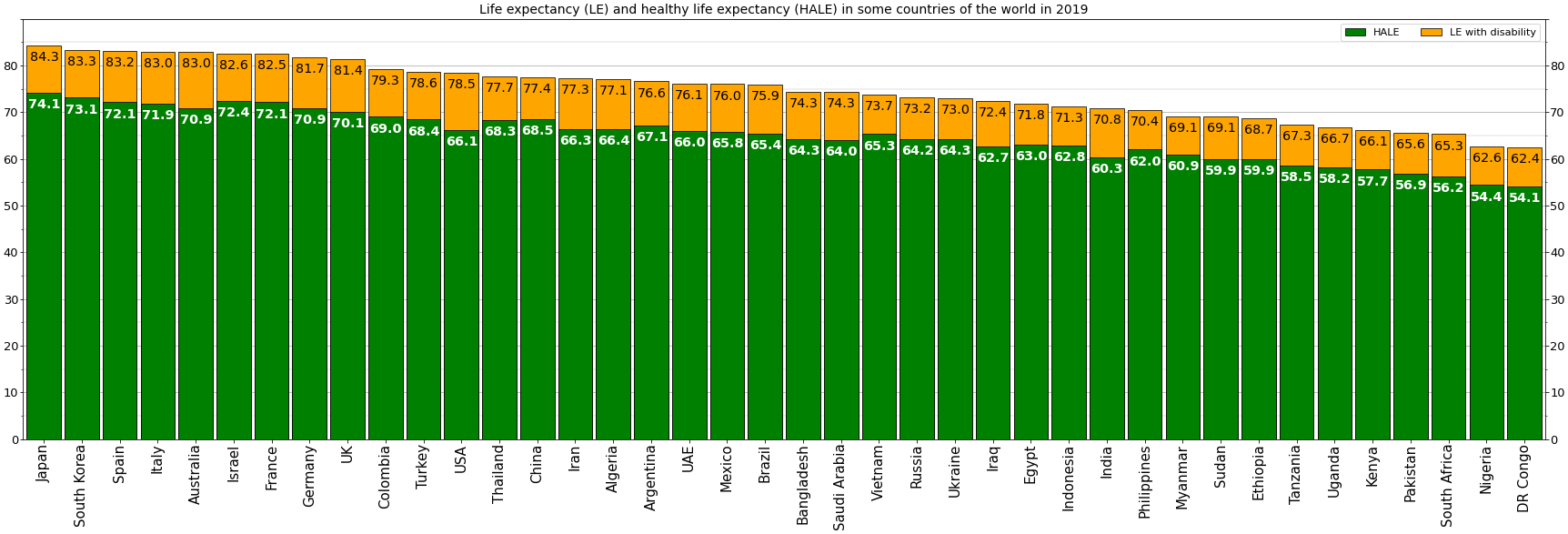|
Measuring Poverty
Poverty is measured in different ways by different bodies, both governmental and nongovernmental. Measurements can be absolute, which references a single standard, or relative, which is dependent on context. Poverty is widely understood to be multidimensional, comprising social, natural and economic factors situated within wider socio-political processes. The main poverty line used in the OECD and the European Union is a relative poverty measure based on 60% of the median household income. The United States uses a poverty measure based on pre-tax income and the U.S. Department of Agriculture's "economy food plan" by which 11% of Americans are living in poverty, but this is disputed. The World Bank Group, World Bank defines poverty in absolute terms. It defines ''extreme poverty'' as living on less than US$1.90 per day. (Purchasing power parity, PPP), and ''moderate poverty'' as less than $3.10 a day. It has been estimated that in 2008, 1.4 billion people had consumption l ... [...More Info...] [...Related Items...] OR: [Wikipedia] [Google] [Baidu] |
Social Context
The social environment, social context, sociocultural context or milieu refers to the immediate physical and social setting in which people live or in which something happens or develops. It includes the culture that the individual was educated or lives in, and the people and institutions with whom they interact. The interaction may be in person or through communication media, even anonymous or one-way, and may not imply equality of social status. The social environment is a broader concept than that of social class or social circle. The physical and social environment is a determining factor in active and healthy aging in place, being a central factor in the study of environmental gerontology. Moreover, the social environment is the setting where people live and interact. It includes the buildings and roads around them, the jobs available, and how money flows; relationships between people, like who has power and how different groups get along; and culture, like art, religio ... [...More Info...] [...Related Items...] OR: [Wikipedia] [Google] [Baidu] |
Developing World
A developing country is a sovereign state with a less-developed industrial base and a lower Human Development Index (HDI) relative to developed countries. However, this definition is not universally agreed upon. There is also no clear agreement on which countries fit this category. The terms low-and middle-income country (LMIC) and newly emerging economy (NEE) are often used interchangeably but they refer only to the economy of the countries. The World Bank classifies the world's economies into four groups, based on gross national income per capita: high-, upper-middle-, lower-middle-, and low-income countries. Least developed countries, landlocked developing countries, and small island developing states are all sub-groupings of developing countries. Countries on the other end of the spectrum are usually referred to as high-income countries or developed countries. There are controversies over the terms' use, as some feel that it perpetuates an outdated concept of "us" and ... [...More Info...] [...Related Items...] OR: [Wikipedia] [Google] [Baidu] |
Kilojoule
The joule ( , or ; symbol: J) is the unit of energy in the International System of Units (SI). In terms of SI base units, one joule corresponds to one kilogram- metre squared per second squared One joule is equal to the amount of work done when a force of one newton displaces a body through a distance of one metre in the direction of that force. It is also the energy dissipated as heat when an electric current of one ampere passes through a resistance of one ohm for one second. It is named after the English physicist James Prescott Joule (1818–1889). Definition According to the International Bureau of Weights and Measures the joule is defined as "the work done when the point of application of 1 MKS unit of force ewtonmoves a distance of 1 metre in the direction of the force." In terms of SI base units and in terms of SI derived units with special names, the joule is defined as One joule is also equivalent to any of the following: * The work required to move ... [...More Info...] [...Related Items...] OR: [Wikipedia] [Google] [Baidu] |
Calorie
The calorie is a unit of energy that originated from the caloric theory of heat. The large calorie, food calorie, dietary calorie, kilocalorie, or kilogram calorie is defined as the amount of heat needed to raise the temperature of one liter of water by one degree Celsius (or one kelvin). The small calorie or gram calorie is defined as the amount of heat needed to cause the same increase in one milliliter of water. Thus, 1 large calorie is equal to 1,000 small calories. In nutrition and food science, the term ''calorie'' and the symbol ''cal'' may refer to the large unit or to the small unit in different regions of the world. It is generally used in publications and package labels to express the energy value of foods in per serving or per weight, recommended dietary caloric intake, metabolic rates, etc. Some authors recommend the spelling ''Calorie'' and the symbol ''Cal'' (both with a capital C) if the large calorie is meant, to avoid confusion; however, this convention ... [...More Info...] [...Related Items...] OR: [Wikipedia] [Google] [Baidu] |
Child Mortality
Child mortality is the death of children under the age of five. The child mortality rate (also under-five mortality rate) refers to the probability of dying between birth and exactly five years of age expressed per 1,000 live births. It encompasses neonatal mortality and infant mortality (the probability of death in the first year of life). Reduction of child mortality is reflected in several of the United Nations' Sustainable Development Goals. Target 3.2 states that "by 2030, the goal is to end preventable deaths of newborns and children under 5 years of age with all countries aiming to reduce under‑5 mortality to as low as 25 per 1,000 live births." Child mortality rates have decreased in the last 40 years. Rapid progress has resulted in a significant decline in preventable child deaths since 1990 with the global under-5 mortality rate declining by over half between 1990 and 2016. While in 1990, 12.6 million children under age five died and in 2016, that number fell to 5 ... [...More Info...] [...Related Items...] OR: [Wikipedia] [Google] [Baidu] |
World War II
World War II or the Second World War (1 September 1939 – 2 September 1945) was a World war, global conflict between two coalitions: the Allies of World War II, Allies and the Axis powers. World War II by country, Nearly all of the world's countries participated, with many nations mobilising all resources in pursuit of total war. Tanks in World War II, Tanks and Air warfare of World War II, aircraft played major roles, enabling the strategic bombing of cities and delivery of the Atomic bombings of Hiroshima and Nagasaki, first and only nuclear weapons ever used in war. World War II is the List of wars by death toll, deadliest conflict in history, causing World War II casualties, the death of 70 to 85 million people, more than half of whom were civilians. Millions died in genocides, including the Holocaust, and by massacres, starvation, and disease. After the Allied victory, Allied-occupied Germany, Germany, Allied-occupied Austria, Austria, Occupation of Japan, Japan, a ... [...More Info...] [...Related Items...] OR: [Wikipedia] [Google] [Baidu] |
Life Expectancy
Human life expectancy is a statistical measure of the estimate of the average remaining years of life at a given age. The most commonly used measure is ''life expectancy at birth'' (LEB, or in demographic notation ''e''0, where ''e''x denotes the average life remaining at age ''x''). This can be defined in two ways. ''Cohort'' LEB is the mean length of life of a birth Cohort (statistics), cohort (in this case, all individuals born in a given year) and can be computed only for cohorts born so long ago that all their members have died. ''Period'' LEB is the mean length of life of a hypothetical cohort assumed to be exposed, from birth through death, to the mortality rates observed at a given year. National LEB figures reported by national agencies and international organizations for human populations are estimates of ''period'' LEB. Human remains from the early Bronze Age indicate an LEB of 24. In 2019, world LEB was 73.3. A combination of high infant mortality and d ... [...More Info...] [...Related Items...] OR: [Wikipedia] [Google] [Baidu] |
Standard Of Living
Standard of living is the level of income, comforts and services available to an individual, community or society. A contributing factor to an individual's quality of life, standard of living is generally concerned with objective metrics outside an individual's personal control, such as economic, societal, political, and environmental matters. Individuals or groups use the standard of living to evaluate where to live in the world, or when assessing the success of society. In international law, an "adequate standard of living" was first described in the Universal Declaration of Human Rights and further described in the International Covenant on Economic, Social and Cultural Rights. To evaluate the impact of policy for sustainable development, different disciplines have defined ''Decent Living Standards'' in order to evaluate or compare relative living experience. During much of its use in economics, improvements to standard of living were thought to be directly connected to eco ... [...More Info...] [...Related Items...] OR: [Wikipedia] [Google] [Baidu] |
Dollars & Sense
''Dollars & Sense'' is a magazine focusing on economics from a progressive perspective, published by Dollars & Sense, Inc, which also publishes textbooks in the same genre. ''Dollars & Sense'' describes itself as publishing "economic news and analysis, reports on economic justice activism, primers on economic topics, and critiques of the mainstream media's coverage of the economy." Dollars & Sense. Published since 1974 (it was originally a monthly; now it is bimonthly), it is edited by a of economists, journalists, and activists committed to the ideals of and |
Think Tank
A think tank, or public policy institute, is a research institute that performs research and advocacy concerning topics such as social policy, political strategy, economics, military, technology, and culture. Most think tanks are non-governmental organizations, but some are semi-autonomous agencies within a government, and some are associated with particular political parties, businesses, or the military. Think tanks are often funded by individual donations, with many also accepting government grants. Think tanks publish articles and studies, and sometimes draft legislation on particular matters of policy or society. This information is then used by governments, businesses, media organizations, social movements, or other interest groups. Think tanks range from those associated with highly academic or scholarly activities to those that are overtly ideological and pushing for particular policies, with a wide range among them in terms of the quality of their research. Later gener ... [...More Info...] [...Related Items...] OR: [Wikipedia] [Google] [Baidu] |
The Heritage Foundation
The Heritage Foundation (or simply Heritage) is an American Conservatism in the United States, conservative think tank based in Washington, D.C. Founded in 1973, it took a leading role in the conservative movement in the 1980s during the Presidency of Ronald Reagan, presidency of Ronald Reagan, whose policies were taken from Heritage Foundation studies, including its ''Mandate for Leadership''. The Heritage Foundation has had significant advocacy, influence in U.S. public policy making, and has historically been ranked among the most influential public policy organizations in the United States. In 2010, it founded a sister organization, Heritage Action, an influential activist force in conservative and Republican Party (United States), Republican politics. Heritage leads Project 2025, also known as the 2025 Presidential Transition Project, an extensive plan that includes appointing ideologically aligned civil servants, restricting abortion access, opposing LGBTQ+ rights, trans ... [...More Info...] [...Related Items...] OR: [Wikipedia] [Google] [Baidu] |






